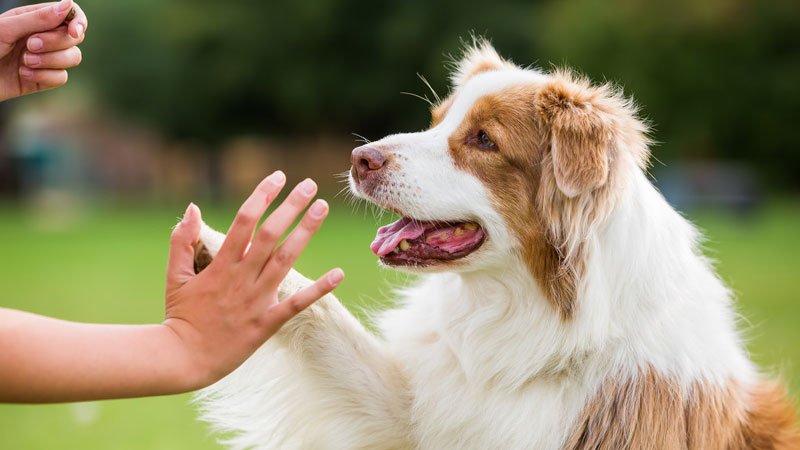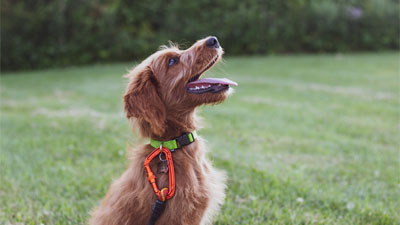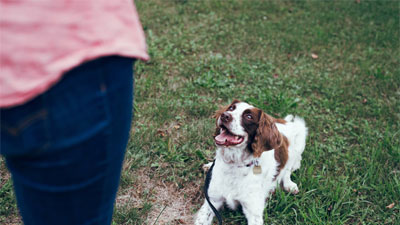- Size
- Smallest
- Small
- Small to Medium
- Medium
- Large
- Giant
- Characteristics
- Smartest
- Hypoallergenic
- Fluffy
- Best Guard
- Best Family
- Best for Kids
- Low Shedding
- Healthiest
- Police Dogs
- Most Calm
- Quietest
- Color
- White
- Black
- Grey
- Brown
- Blue
- Red
- Coat
- Hairless
- Short
- Long
- Origin
- Japan
- China
- Australia
- Germany
- Italy
- United States
- France
- Group
- Hound
- Terrier
- Herding
- Toy
- Working
- Sporting
Teaching Your Dog to Wave Goodbye: A Step-by-Step Guide

Teaching your dog how to wave is not only a fun and impressive trick, but it also provides a unique opportunity to strengthen the bond between you and your furry companion. By training your dog to wave, you are encouraging them to communicate in a non-verbal manner and showcasing their intelligence and trainability.
In this comprehensive guide, we will take you through the step-by-step process of teaching your dog how to wave. We will discuss the benefits of this trick, address common challenges, provide additional tips for success, and explore variations of the waving trick to further enhance your training experience.
Understanding the Benefits of Teaching Your Dog How to Wave
Teaching your dog how to wave comes with numerous benefits that extend beyond simply impressing your friends and family.
Firstly, this trick provides mental stimulation for your dog. Learning new behaviors such as waving requires mental effort, keeping your dog's cognitive abilities sharp and engaged. By incorporating training into their routine, you provide an outlet for their natural curiosity and intelligence.
Secondly, teaching your dog to wave enhances their social skills. Dogs are naturally social animals, and by introducing a trick like waving, you expose them to new people and encourage positive interactions. This can be particularly beneficial for dogs that are shy or anxious around strangers, as it helps them build confidence and trust in different social settings.
Lastly, training your dog to wave strengthens the bond between you and your furry friend. By spending quality time together, communicating effectively, and working towards a common goal, you develop a deeper understanding of each other. This increased connection is the foundation for a strong and lasting relationship.
Step-by-Step Guide to Teaching Your Dog How to Wave
Now that we understand the benefits of teaching your dog how to wave, let's dive into the step-by-step process of training:
Step 1: Establish Basic Training Foundation
Before teaching your dog advanced tricks like waving, it's important to ensure they have a solid foundation in basic commands. Commands such as "sit," "stay," and "paw" should be well understood and consistently followed by your dog.
Step 2: Choose a Visual Cue
Decide on a visual cue that your dog will associate with the waving behavior. This could be extending your arm, raising your hand with an open palm, or any other gesture that resembles a wave. Consistency is crucial at this stage, so choose a cue that is comfortable for you and easily recognizable for your dog.
Step 3: Capture the Behavior
Observe your dog's natural behaviors for any movements that resemble a wave. For example, some dogs raise a paw when they want attention or during play. When you see your dog perform this behavior, use an enthusiastic and positive marker word like "yes" or a clicker, followed by an immediate reward. Initially, reward your dog each time they offer the behavior.
Step 4: Associate the Cue
Once your dog starts to understand that they are being rewarded for raising their paw, introduce the visual cue alongside the behavior. As your dog raises their paw, give the visual cue and immediately follow it with the marker word and a treat. This creates an association between the cue and the desired behavior.
Step 5: Shape the Behavior
Gradually shape the waving behavior by only rewarding your dog when they fully raise their paw in response to the visual cue. Start to fade out rewards for partial or incomplete waves, reinforcing the idea that only a full wave will be rewarded.
Step 6: Add the Verbal Cue
Introduce a verbal cue, such as "wave" or "goodbye," just before giving the visual cue. Repeat this process consistently so that your dog associates the verbal cue with the desired behavior. Over time, your dog will understand and respond to the verbal cue alone, making the visual cue unnecessary.
Step 7: Generalize the Behavior
Practice the waving trick in different locations and with various people. By doing so, your dog will learn to generalize the behavior and understand that waving applies to any friendly person, not just you. Gradually increase the difficulty level by adding distractions or performing the trick in unfamiliar environments.
Overcoming Common Challenges
While teaching your dog how to wave, you may encounter several challenges. Let's address some of the common ones and offer tips on how to overcome them:
Challenge 1: Lack of Interest or Motivation
If your dog seems disinterested or unmotivated during training sessions, it's essential to evaluate the rewards you are using. Ensure that you are using high-value rewards, such as tasty treats or their favorite toy. Experiment with different motivators to find what works best for your dog.
Challenge 2: Timing
Timing is crucial when using positive reinforcement. Make sure to mark the behavior with a positive marker word or clicker at the precise moment your dog raises their paw, followed by an immediate reward. This helps your dog understand which specific behavior is being rewarded.
Challenge 3: Distractions
Training your dog in a quiet, low-distraction environment initially can help them focus better. As your dog becomes more proficient in the waving trick, gradually introduce distractions to reinforce their ability to perform the behavior in various situations.
Challenge 4: Patience and Consistency
Training takes time and consistency is key. It's important to remain patient with your dog and avoid becoming frustrated. Consistency in your cues, rewards, and training sessions will help your dog understand and solidify the desired behavior.
Variations and Advanced Techniques
Once your dog has mastered the basic wave, you can explore variations and advanced techniques to enhance their skills. Here are a few ideas:
High-Five: Teach your dog to extend their paw for a high-five instead of a wave. You can use a similar training process as before, just adjusting the verbal cue and associated action.
Double Wave: Train your dog to wave with both paws simultaneously. This is more challenging but can be achieved by reinforcing the behavior when your dog lifts both front paws off the ground slightly.
Wave Sequences: Create a series of consecutive waves for your dog to perform. This adds complexity and visual interest to the trick. Gradually increase the number of waves in the sequence as your dog becomes more comfortable and skilled.
Conclusion
Teaching your dog how to wave not only adds an impressive skill to their repertoire but also deepens your bond and enhances communication between you and your furry friend. By following the step-by-step process and utilizing positive reinforcement techniques, you can successfully train your dog to wave. Remember to be patient, consistent, and enjoy the process. Each dog learns at their own pace, so tailor your training sessions to suit their individual needs. Moving beyond the basic wave, you can explore variations and advanced techniques to further challenge your dog's abilities. The key is to have fun, build trust, and strengthen the special connection between you and your canine companion through the joy of trick training.
You May Also Like
 Dog Training TipsTrain Your Dog to Lie Down: A Step-by-Step Guide
Dog Training TipsTrain Your Dog to Lie Down: A Step-by-Step Guide Dog Training TipsTrain Your Dog to Roll Over: A Step-by-Step Guide
Dog Training TipsTrain Your Dog to Roll Over: A Step-by-Step Guide Dog Training TipsTeaching Your Dog the "Sitting Pretty" or "Beg" Trick
Dog Training TipsTeaching Your Dog the "Sitting Pretty" or "Beg" Trick Dog Training TipsTraining Your Dog to Spin: A Step-by-Step Guide
Dog Training TipsTraining Your Dog to Spin: A Step-by-Step Guide Dog Training TipsTeaching Your Dog How to Back Up: Step-by-Step Guide
Dog Training TipsTeaching Your Dog How to Back Up: Step-by-Step Guide Dog Training TipsTeaching Your Dog to Speak: A Comprehensive Guide
Dog Training TipsTeaching Your Dog to Speak: A Comprehensive Guide